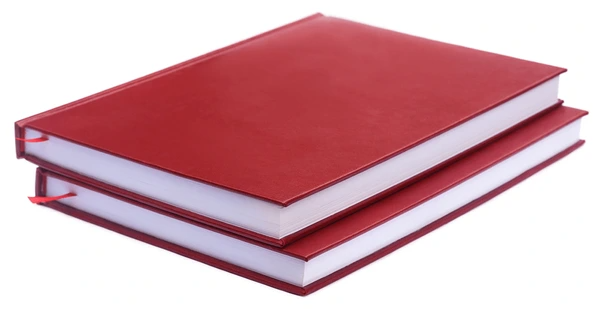
What Is Thesis Binding?
Why Is Thesis Binding Important?
While the content of your thesis is paramount, the appearance and durability of your work also play a significant role in its acceptance. Here’s why thesis binding matters:
- Professional Appearance: Properly bound thesis gives a professional and academic appearance, which is essential when presenting your research to an academic committee or as part of your graduation requirements.
- Protection: Thesis binding protects your work from damage. With a sturdy cover, your work is shielded from environmental factors, such as moisture, dust, and wear over time.
- Long-Term Storage: Your thesis is likely to be archived by your institution for future reference. Binding ensures that the document remains intact and legible for years to come.
- Compliance with Institutional Requirements: Many universities have specific binding requirements, such as color, font style, and material. Following these guidelines ensures that your thesis meets institutional standards for submission.
- Presentation: A well-bound thesis makes an impression on your academic peers, supervisors, and examiners. It adds a level of formality and respect to the work you’ve done.
Different Types of Thesis Binding
There are several types of thesis binding, each suited for different needs, preferences, and budgets. The most common types of thesis binding include:
1. Hardbound Thesis Binding
Hardbound binding is the most formal and professional method of binding. It uses a hardcover with a rigid structure, often in materials like leather, cloth, or sturdy board. The spine and cover are usually stamped with the title, author’s name, and other details.
Features:
- High-quality appearance
- Long-lasting and durable
- Ideal for submission to academic institutions
- Commonly used for library archiving
2. Softbound Thesis Binding
Softbound binding is a more affordable option compared to hardbound binding. It uses a soft, flexible cover but still provides a professional appearance. It is often used for submission drafts or copies for the student’s use, rather than for archival purposes.
Features:
- More affordable than hardbound binding
- Flexible and easy to handle
- Often used for draft submissions or personal copies
3. Spiral Binding
Spiral binding involves binding the thesis with a plastic or metal coil that allows the document to lay flat when opened. This method is commonly used for internal submissions or where a practical, flexible binding is required.
Features:
- Allows the thesis to lay flat
- Ideal for documents that may need to be referenced or annotated
- Less formal than hardcover or softcover options
Also Read: The Best Flat Top Grill for Perfect Outdoor Cooking
4. Comb Binding
Comb binding uses a plastic comb to bind the pages together. This option is relatively inexpensive but is typically less durable and less formal compared to other binding methods. It is commonly used for drafts or non-archival copies.
Features:
- Economical option
- Easy to handle and photocopy
- Ideal for internal review, not formal submission
5. Thermal Binding
Thermal binding uses heat to bind the document, typically by applying an adhesive to the spine of the thesis. The pages are then encased in a flexible cover, giving a clean, professional finish. This method is commonly used for personal copies or smaller projects.
Features:
- Quick turnaround time
- Clean, professional appearance
- Often used for shorter documents
What Are the Steps in Thesis Binding?
The steps in thesis binding can vary depending on the binding method chosen, but the general process includes the following stages:
1. Preparation of Manuscript
Before binding, ensure your thesis is fully formatted according to your university’s guidelines. This may include adjustments to page numbers, margins, and sections. Proofreading your work is essential to ensure there are no errors before the binding begins.
2. Printing
Once the manuscript is ready, print the required number of copies. Ensure that you have met the page count requirement for submission. Some binding services may offer printing in addition to binding.
3. Selection of Binding Method
Choose the appropriate binding method (hardbound, softbound, spiral, etc.) based on your preferences and requirements.
4. Binding Process
After choosing the binding method, the document will be bound according to the selected style. This involves the attachment of the pages to the cover, the sealing of the binding, and any additional personalization, such as embossing or printing on the cover.
5. Delivery and Submission
Once your thesis is bound, it will be delivered to you. You can then submit it to your university, department, or other academic institution as per their guidelines.
Conclusion
Thesis binding is more than just a final step in the academic process—it’s an essential part of presenting your research in a professional and durable manner. Whether you choose hardbound, softbound, or another binding method, ensure that your thesis is prepared to meet both your institution’s requirements and your personal preferences. By understanding the types of binding, the process involved, and the frequently asked questions, you can make an informed decision and ensure that your thesis looks as impressive as the research it represents.
Frequently Asked Questions (FAQs)
1. How much does thesis binding cost?
The cost of thesis binding depends on several factors, including the type of binding, the number of copies, and any additional customization (such as embossing or color printing). On average, hardbound thesis binding can cost between $30 and $100 per copy, while softbound or spiral binding may cost less.
2. Can I bind my thesis at home?
While it’s possible to bind your thesis at home using DIY kits, it’s often recommended to use a professional binding service for a more polished and durable result. Professional binders can ensure that your thesis meets institutional requirements and is bound to last.
3. How long does thesis binding take?
The time it takes to bind your thesis varies depending on the binding method and the service provider. Hardbound binding can take several days to a week, while softbound or spiral binding may be quicker, typically completed within a day or two.
4. How many copies of my thesis should I bind?
This depends on the specific requirements of your institution or department. Generally, you may be required to submit one or two bound copies, with additional copies for personal use or your supervisor if needed.
5. What materials are used for hardbound thesis binding?
Hardbound thesis binding typically uses materials such as leather, cloth, or book board. These materials are durable and give the thesis a professional and long-lasting appearance. The cover can be embossed or printed with the title, author’s name, and university logo.
6. Do I need to bind my thesis before submission?
Most institutions require bound copies of your thesis to be submitted as part of the final graduation process. Some universities may accept digital submissions, but a bound copy is often necessary for official archiving and examination.








